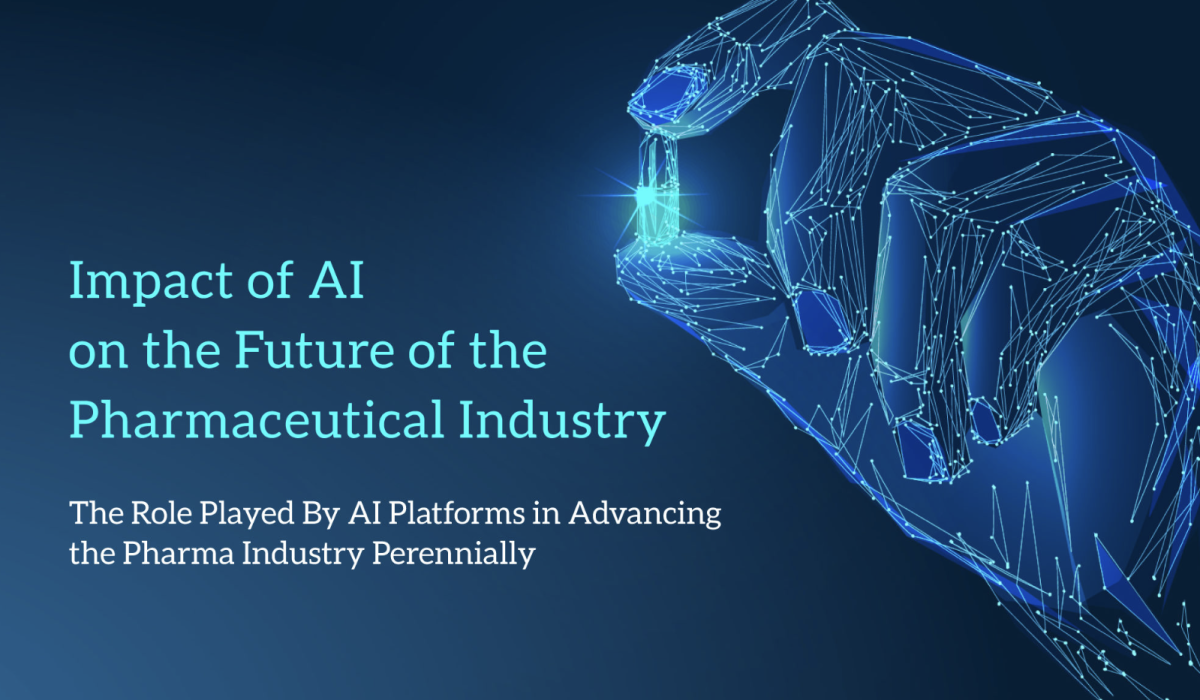This article explains how pharma industries can modernize their rigid supply chains by leveraging AI. This will enable the pharmaceutical industry to translate disruptions into opportunities for profit generation rather than wastage.
End-to-end pharma supply chains are complex value chains consisting of pharmaceutical companies and their partners – CDMOs, CMOs, API suppliers, logistics partners, and hospitals with patients as the ultimate beneficiaries. The pharma supply chain operations should be designed, planned, executed, and optimized with patient outcomes as a singular focus. Current pharma supply chains are very rigid and silo-centric with limited shared operational intelligence causing delayed decision-making with very little reaction time for any unplanned contingencies.
Rigid supply chains have a hard time reacting to their operational disruptions like disruptions in sourcing, manufacturing, supplying, distribution and logistics. Further very few pharma supply chains (like vaccines) today can deal with Covid like pandemic and are capable of converting disruptions into opportunities for increased revenue and maximizing profits. This is because they have put in the right investments to make these supply chains agile and resilient. Agility requires continuous, on-demand planning that can not only react to operational disruptions in sourcing, manufacturing, distribution, and logistics but also to external world events like wars, pandemics, environmental disasters, etc.
Covid has demonstrated that fast, reactive, agile, efficient pharma supply chains are essential for the survival and existence of humans. Pharma supply chains can be made intelligent, dynamic, agile, resilient, and efficient by integrating planning and operations. Planning and operations can be integrated:
- By providing real-time visibility to the supply chain
- Automation that reduces manual intervention and automates repetitive tasks

Modern Pharma supply chains need to incorporate continuous, on-demand planning while execution. Pharma has a lot to learn from the software industry and they need to go beyond JIT. Pharma needs to invest in processes, automation, and sensors that enable their supply chain planners and operational specialists to continuously plan, execute, and re-plan while ensuring they are meeting their weekly, monthly, and quarterly business plans and proactively managing the disruptions. This can only happen by reducing the gap between the real-world data and the data used by planners. By embedding intelligence in the supply chain using IoT, sensors full visibility into the real time operations of supply chain can be provided using transactional signals, risk signals, disruption alerts and software-generated signals. Planners, specialists, and operators can quickly react to disruptions, and adjust and re-align their processes to quickly respond to changing situations.
Deeper visibility of real-world data across the Pharma value chain will achieve deep collaboration between the partners thereby providing full visibility end to the end and thereby benefit the hospitals and patients for whom outcome matters the most. Not only operational signals but disruption alerts should flow end-to-end across the organizational boundary so that each stakeholder gets the required time to react and adapt to the changing real-world situation. Pharma and CDMOs need to have integrations in place to work digitally together and ward off these disruptions. Or else results will be catastrophic if major disruptions are affecting multiple stakeholders in the value chain.
Build intelligence in the Pharma supply chain to make decisions and trigger automated workflows. Human and manual decision-making is costly and loses key operational details. Handling of operational disruptions can be automated by building intelligence in the supply chain. Actionable intelligence can be obtained from the supply chain operational data. AI can be used to predict possible disruptions and initiate automated actions to manage the disruptions. This frees up human resources to work on other priority issues. Some examples:
- Production delays at CDMOs and ODMs can be predicted from the operational data. By leveraging AI intelligence can be built in the supply chain to predict production delays at CDMOs and ODMs well in advance in real time. Automated workflows can trigger tasks that keep all stakeholders – operations, planners, logistics and delivery partners well-informed about potential disruptions. Planners can modify production plans. Operation specialists can be effectively engaged thereby reducing wastages across the stakeholders.
- Real-time weather and traffic conditions can be monitored, delivery routes and material dispatch can be optimized which provides fuel efficiency, low carbon footprint, and better utilization of resources.
Supply chain intelligence center (SCIC) is the real need for modern-day supply chains that continuously gather signals in real-time from sensors, analyzes transactional data, accesses risk, identify/predict disruptions, generate signals and alerts. SCIC can also monitor environment data like traffic, weather, news and try to access the impact on the operations of supply chain. SCIC is digital twin of the physical supply chain that enables planners and operation specialists to visualize the supply chain from multiple dimensions. The supply chain intelligence center provides visibility across organizational boundaries and enables operational specialists to monitor supply chain operations in real-time.
Supply chain intelligence center reduces the gap between execution, operational and planning data significantly thereby making the supply chain agile and nimble. Planners can now create and test workflows that automate decision-making and routine tasks. Planners can create new operational models with multiple production schedules and inventory allocation costs. Planners can back-test their models based on historical data captured at the supply chain intelligence center. They can simulate what-if scenarios and understand the impact of their changes before rolling them out to real supply chains. Further supply chain intelligence center can continuously learn from the data it is capturing in real time. From its learning, the intelligence center can provide prescriptive, predictive, actionable insights that otherwise would require hours, days and weeks of manual scavenging of operational data.
Published by:
Sr.Director & Country Leader, India Operations – Bcentriqe


















